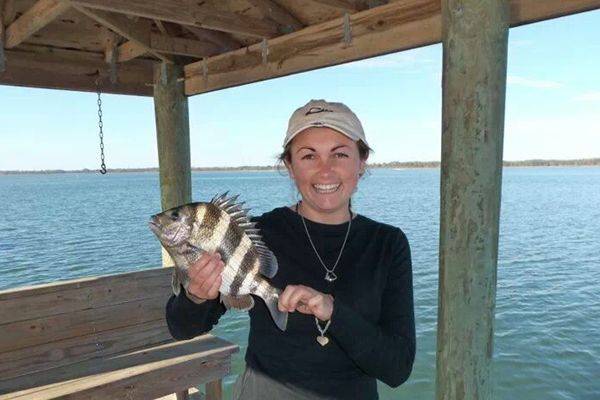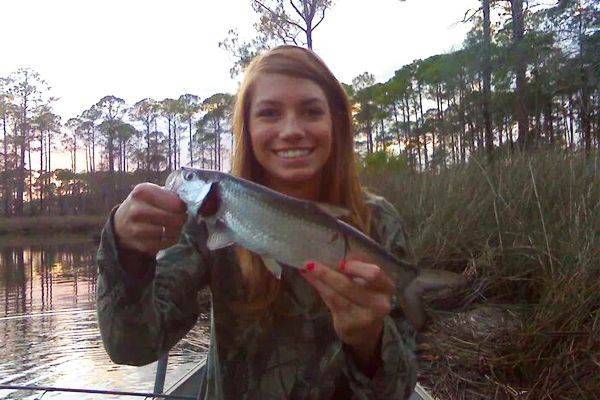
By: Capt Vicky Wiegand
[dropcap]F[/dropcap]ebruary is finally over and we are starting to see warmer weather. I know all of us outdoors women and men have been counting down the days till the time changes and we can enjoy that extra hour of sunshine in the evenings. This winter has been a hard one on me; I didn’t get to go winter fishing as much as I planned on. So as you can imagine I am ready for spring! In March the air temperature is warming but the water temperature always lags and a lot of the inshore fish stay lethargic for a little while longer. The water usually stays clear throughout March as long as we don’t have a flood of rain in a short period of time. This clear water and warm air makes March a great month to explore! North Florida has a plethora of nooks and crannies for inshore fish species to hide. Get out there and find something new! There are tons of rocks, oyster bars, creeks, deep holes in flats, and even some great man made structures that hold fish. When you find a place that looks fishy but isn’t currently holding fish, mark it on your GPS and make note to check it out later in the year. You never know what you will find when exploring North Florida’s unique inshore waterways. For example, a couple of early springs ago while exploring some creeks we found a spring that was filled with finicky baby tarpon. It was an amazing find but at the same time a very frustrating experience. We must have thrown the entire tackle shop at those pesky tarpon and not a single hit. In March when you find a fish he is usually in a big school with the rest of his buddies. The challenge is getting them to eat. So be ready and have patience! Patience is a necessity when fishing in early spring. If you go fishing and get skunked, at least you learned something. Every failure or success is a lesson, you have to always be learning and perfecting your game. After being defeated by the baby tarpon, the next time we visited the spring we had a different tide, lighter leader and much colder weather. It still wasn’t easy but I managed to coax a little bitty tarpon to the boat.
Keep a Log
Keeping a fishing log may seem a little old fashion but it’s a great way to track your successes/ failures and how they coordinate with the weather and tide.
Important factors to note:
Date/Time
Location
Tide
Weather Conditions (the more detail the better)
What did you catch and how many?
What kind of bait did you use? What worked and what didn’t work?

